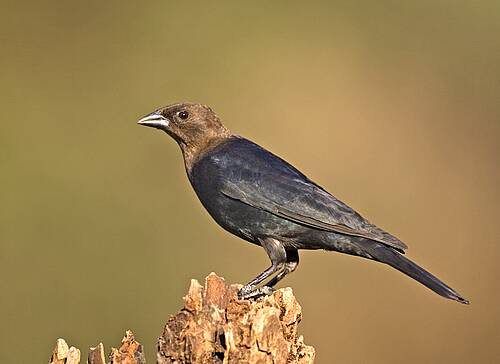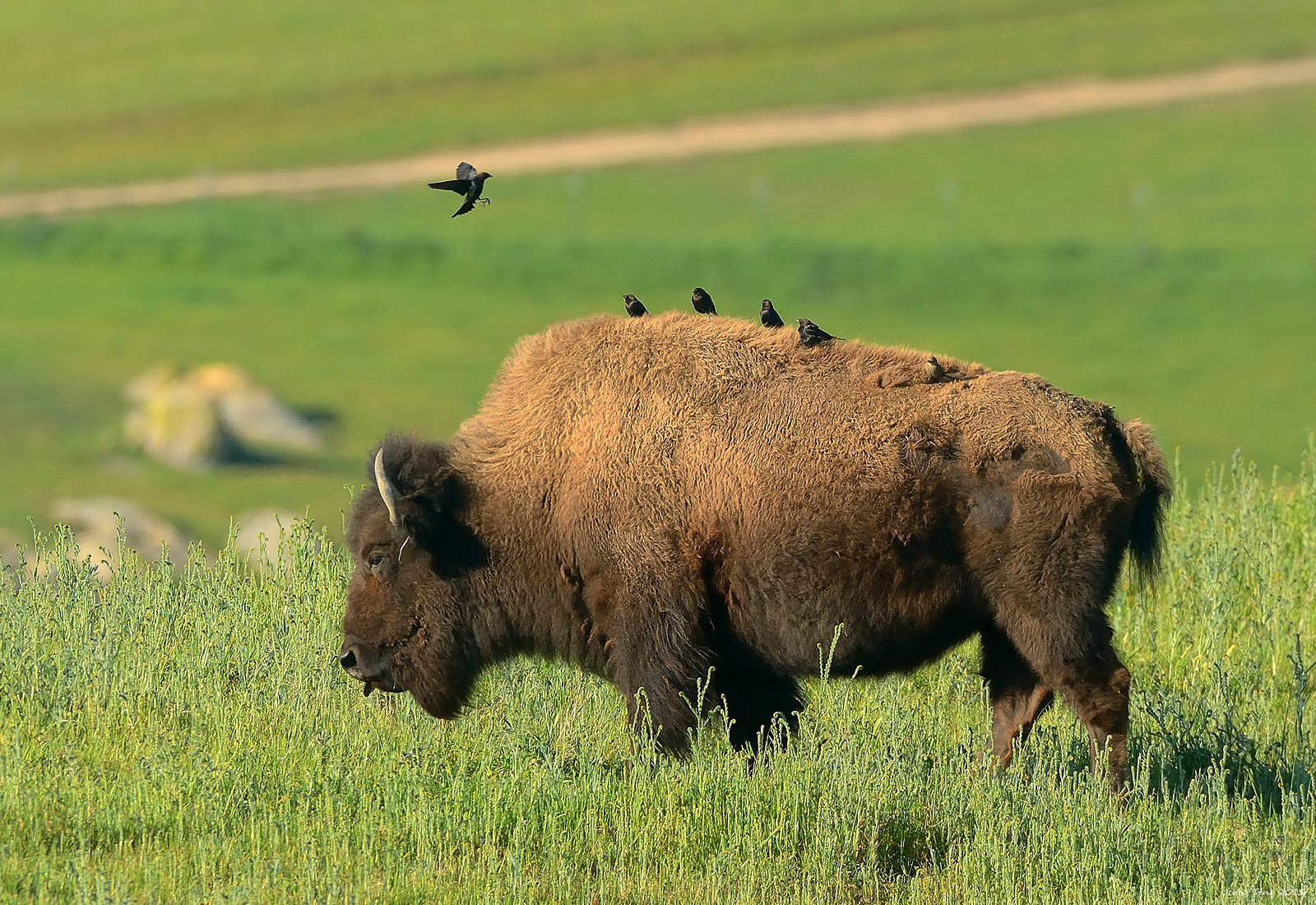Brown-headed Cowbirds in the Bay Area
Editor’s Note: When I was new to birding, I was puzzled by the hostility shown by many veteran birders to the Brown-headed Cowbird. Mere mention of a cowbird among sightings during the Christmas Bird Count compilation dinner would draw boos! This excerpt from San Francisco’s Natural History: From Sand Dunes to Streetcars, the new book by Harry Fuller, explains why.
By Harry Fuller
One pernicious newcomer to the Bay Area avifauna is the Brown-headed Cowbird. Cowbirds are successful nest parasites. A female cowbird can lay dozens of eggs in a single summer, each in a nest built by another species. When the cowbird egg hatches, the chick pushes out the smaller nestlings of the host species and thrives with its co-opted parents. American Robins evolved alongside cowbirds, so robins can and do recognize and destroy cowbird eggs. Most western bird species do not have that ability, and are easily duped.

The cowbird’s fledged offspring need forest patches and heavily grazed fields to feed in. Once followers of the large bison herds on the Great Plains, cowbirds quickly recognized the new source of plenty that arrived with settlers. The pioneers’ livestock left uneaten grain and the inevitable manure. That in turn attracted insects that fed the cowbirds. Elliott Coues described some cowbird flocks in the 1870s: “Every wagon-train passing over the prairies in summer is attended by flocks of the birds; every camp and stock-corral, permanent or temporary, is besieged by the busy birds, eager to glean subsistence from the wasted forage.” So, although originally confined to areas east of the Rockies, the cowbird has now overrun much of the North American continent.

One cowbird was spotted east of Los Angeles in 1889. Then in 1895, Charles Bendire, a military man who took advantage of his various postings to bird intensively, reported seeing a few cowbirds in the Great Basin. By 1907, one was seen in Bakersfield; more were seen then in Fresno and Fremont in 1911 and 1912. In 1926, two eggs were found in a Common Yellowthroat’s nest at Lake Merced in San Francisco. By 1931 the cowbird had spread to Sacramento, and by 1934, to Berkeley, Oakland, and Yosemite National Park. By 1941, it had reached Eureka, and Tahoe by 1957. In 1969 Laurence Binford saw a Wrentit feeding a juvenile cowbird at Lake Merced. I once had to watch two Common Yellowthroats feeding “their” baby cowbird at Lake Merced. The cowbird fledgling was about three times the size of each parent. Wrentits are long gone and yellowthroats are scarce in San Francisco, but cowbirds have flourished all along the Pacific Slope.


Cowbirds now parasitize over a hundred species across America. In San Francisco, some species such as Yellow Warbler and Hutton’s Vireo have declined at least in part because of the Brown-headed Cowbird. Recent research shows cowbirds often destroy victim species’ nests to force repeated nesting. This increases the cowbird’s chance to lay an egg in a new nest.
Strong fliers, mature Brown-headed Cowbirds don’t need to stay near fields or forests. Though they are land birds, they are one of the most common songbirds seen on Pacific pelagic trips, often flying many miles from shore. It is no surprise that they were able to extend their range to every part of the United States where people have removed native plants to create grasslands, then cut through forests or chaparral to build roads, farms, and irrigation ditches. All these changes please foraging and egg-laying cowbirds.
Harry Fuller was a long-time Golden Gate Bird Alliance member and San Francisco resident. Now living in Oregon, he leads trips there for GGBA. He is also author of Great Gray Owls of California, Oregon and Washington as well as Freeway Birding, I-5 San Francisco to Seattle. His new book on San Francisco’s natural history is available at Green Apple Books in San Francisco, as a book or e-book from Amazon, or signed copies directly from the author: atowhee@gmail.com. Harry’s web site, towhee.net, has information on birding Northern California and Oregon as well as his other books.
Harry will be teaching a class and leading two special full day field trips in March for Golden Gate Bird Alliance on the natural history of San Francisco. For details, check the Classes page of our web site in late January or early February.
